- Importance of Soil Preparation for Growing String Beans
- 1. Soil Quality
- 2. Soil Fertility
- 3. Weed Control
- 4. Soil Aeration
- 5. Soil Moisture
- 6. Soil pH
- Selecting the Right String Bean Varieties for Your Garden
- Determine the Type
- Consider the Climatic Requirements
- Decide on the Color and Flavor
- Check the Days to Maturity
- Read Reviews and Recommendations
- Best Practices for Planting String Beans
- Proper Watering Techniques for String Beans
- Essential Tips for Fertilizing String Bean Plants
- Preventing Common Pests and Diseases in String Bean Crop
- 1. Crop Rotation
- 2. Good Garden Hygiene
- 3. Proper Watering
- 4. Mulching
- 5. Companion Planting
- 6. Pest Control
- 7. Disease Management
- 8. Fertilization
- Companion Planting for Increased String Bean Yields
- 1. Corn
- 2. Marigolds
- 3. Carrots
- 4. Herbs
- Harvesting and Storing String Beans for Maximum Freshness
- 1. Timing is Key
- 2. Harvesting Techniques
- 3. Storing Freshly Harvested String Beans
- 4. Blanching for Extended Storage
- 5. Freezing String Beans
- 6. Canning String Beans
- 7. Using Fresh String Beans
- 8. Enjoy the Fruits of Your Labor
- “Question-Answer”
- What are some expert gardening tips for growing string beans?
- How long does it take for string beans to grow?
- Can string beans be grown in containers?
- What are some common pests and diseases that affect string beans?
- Should string beans be harvested when they are young or ripe?
- “Video” 2 tricks that will double your bush & pole bean yields
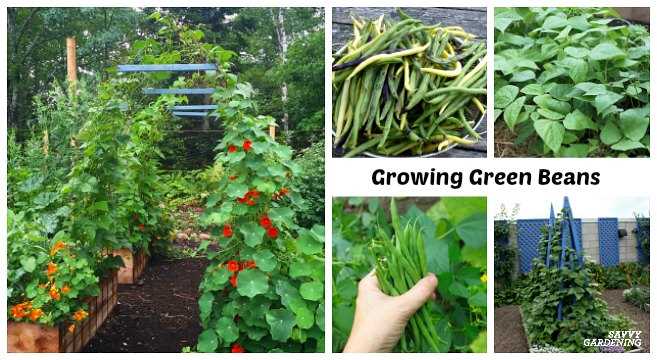
String beans, also known as green beans or snap beans, are a popular vegetable crop grown in gardens all around the world. These tasty legumes are not only delicious when cooked, but they also provide a healthy source of vitamins and minerals. If you want to grow an unprecedented crop of string beans in your own garden, there are a few expert gardening tips that can help you achieve exceptional results.
Choosing the right variety: One of the first secrets to growing a bountiful crop of string beans is selecting the right variety. There are several different types of string beans, including bush beans and pole beans. Bush beans are compact and do not require support, making them a great option for small gardens. Pole beans, on the other hand, need trellises or other support structures to climb on. Consider the space you have available in your garden and choose a variety that suits your needs.
Providing optimal growing conditions: Like most vegetables, string beans thrive in well-draining soil that is rich in organic matter. Prepare your garden bed by adding compost or well-rotted manure to improve the soil’s fertility. String beans also prefer full sun, so choose a location that receives at least 6-8 hours of direct sunlight each day. Proper spacing between plants is also important to ensure good air circulation and prevent diseases.
Supporting their growth:
As the name suggests, string beans need some form of support to grow properly. For bush beans, simply mulching the soil around the plants can help keep the beans off the ground and prevent rotting. For pole beans, install trellises or stakes before planting and guide the vines as they grow. This will not only keep the beans off the ground but also make harvesting much easier.
With these expert gardening tips, you can cultivate an unprecedented crop of string beans in your own garden. By choosing the right variety, providing optimal growing conditions, and supporting their growth, you will be rewarded with an abundance of delicious and nutritious string beans that you can enjoy all season long.
Importance of Soil Preparation for Growing String Beans
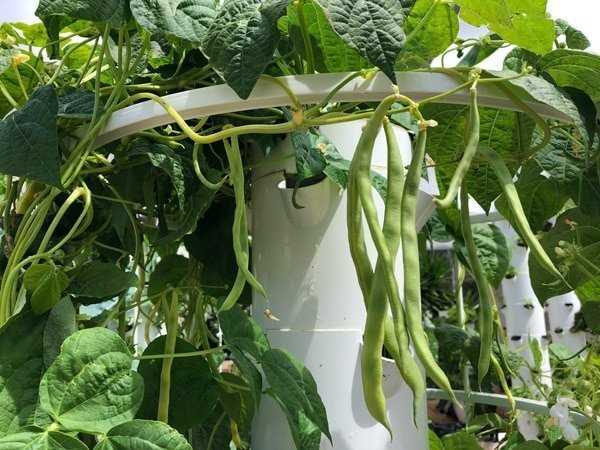

Growing string beans requires careful soil preparation to ensure a healthy and bountiful crop. Here, we will discuss the importance of soil preparation and the steps you can take to create an optimal growing environment for your string beans.
1. Soil Quality
String beans thrive in well-draining soil that is rich in organic matter. Before planting, it is crucial to assess the quality of your soil. Perform a soil test to determine the pH level and nutrient content. String beans prefer a slightly acidic soil with a pH range of 6.0 to 6.8.
2. Soil Fertility
String beans are heavy feeders and require nutrient-rich soil to grow to their full potential. Enhance the fertility of your soil by adding organic matter such as compost or well-rotted manure. These amendments will not only provide essential nutrients but also improve the soil structure and water holding capacity.
3. Weed Control


Prior to planting string beans, it is crucial to control weeds in your garden bed. Weeds compete with the string beans for nutrients, water, and sunlight. Clear the area of any existing weeds and apply a thick layer of mulch to prevent future weed growth. This will help ensure that your string beans have optimal access to essential resources.
4. Soil Aeration
Proper soil aeration is essential for the root development of string beans. Loosen the soil with a garden fork or tiller to improve its texture and allow for better drainage. Avoid compacting the soil, as this can hinder the growth of the string bean roots.
5. Soil Moisture
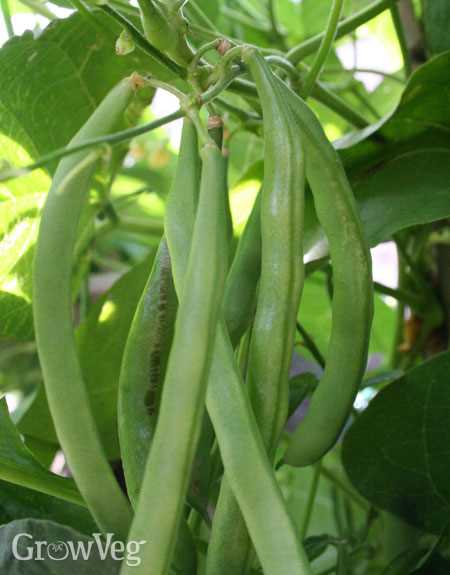

String beans require consistent soil moisture to thrive. Ensure that your soil has good water retention capabilities by adding organic matter and creating furrows or raised beds. Monitor the moisture levels regularly and water the plants as needed, especially during dry periods.
6. Soil pH
As previously mentioned, string beans prefer a slightly acidic soil pH of 6.0 to 6.8. If your soil pH is outside this range, you can adjust it by adding soil amendments. Lime can be added to increase pH, while sulfur can be used to decrease it. It is important to test the soil pH regularly to maintain optimal growing conditions for your string beans.
By dedicating time and effort to soil preparation, you can set the stage for a successful string bean harvest. Follow these steps to ensure that your plants have the best possible growing environment to flourish and provide you with an unprecedented crop of string beans.
Selecting the Right String Bean Varieties for Your Garden
Growing string beans in your garden can be a rewarding and satisfying experience. However, to ensure a successful harvest, it is important to choose the right string bean varieties that are suitable for your garden’s conditions and your personal preferences. Here are some tips to help you select the best string bean varieties for your garden:
Determine the Type
There are three main types of string beans: bush beans, pole beans, and half-runner beans. Bush beans are compact plants that do not require support and are ideal for small gardens or containers. Pole beans are climbing plants that need trellises or poles to grow on. Half-runner beans are a cross between bush and pole beans, offering some climbing abilities while still maintaining a more compact size. Consider the available space in your garden and choose the type that suits your needs best.
Consider the Climatic Requirements
String bean varieties have different climatic requirements, so it is important to select varieties that are well-suited to your region’s climate. Some varieties thrive in cooler climates, while others are more heat-tolerant. Research the ideal temperature range for the varieties you are interested in and choose accordingly.
Decide on the Color and Flavor
String beans come in a variety of colors, including green, yellow, and purple. Each color has its own unique flavor profile, so consider your personal preference when selecting the color variety. Green string beans are the most commonly grown, offering a classic flavor that is suitable for a variety of culinary uses.
Check the Days to Maturity
String bean varieties have different days to maturity, meaning the time it takes for the plant to produce mature pods. This information is usually provided on the seed packet or in the plant description. Consider how soon you want to start harvesting and choose varieties with a suitable number of days to maturity.
Read Reviews and Recommendations
Take the time to read reviews and recommendations from other gardeners or gardening experts. This can provide valuable insights into the performance, disease resistance, and overall quality of different string bean varieties. Look for varieties that consistently receive positive feedback and are known for their reliability.
By considering the type of string beans, climatic requirements, color and flavor preferences, days to maturity, and reading reviews, you can make an informed decision when selecting string bean varieties for your garden. Choose the right varieties, and you’ll be well on your way to growing an unprecedented crop of string beans!
Best Practices for Planting String Beans
String beans, also known as snap beans or green beans, are a popular vegetable to grow in home gardens. Here are some best practices to follow when planting string beans to ensure a healthy and bountiful crop:
- Choose the right variety: There are many different varieties of string beans available, including bush beans and pole beans. Consider the space you have available in your garden and choose a variety that fits your needs.
- Prepare the soil: String beans prefer well-draining soil with a pH range of 6.0 to 6.8. Before planting, work compost or well-rotted manure into the soil to improve fertility and drainage.
- Plant at the right time: String beans are warm-season crops and should be planted after the danger of frost has passed. Soil temperatures should be above 50°F (10°C) for optimal germination.
- Provide support for pole beans: If you are growing pole beans, provide support such as trellises, stakes, or a fence for the plants to climb on. This will help keep the plants upright and make harvesting easier.
- Space the plants properly: String beans should be planted about 4-6 inches apart in rows. If you are planting bush beans, space the rows about 2-3 feet apart to allow for good air circulation.
- Water regularly: String beans have shallow root systems and require regular watering, especially during dry periods. Water deeply, soaking the soil to a depth of 6-8 inches, and avoid wetting the leaves to prevent disease.
- Use mulch: Apply a layer of organic mulch, such as straw or shredded leaves, around the base of the plants to conserve moisture, suppress weeds, and regulate soil temperature.
- Watch out for pests and diseases: Common pests of string beans include aphids, bean beetles, and slugs. Monitor your plants regularly and take appropriate measures to control pest infestations. Choose disease-resistant varieties when possible.
- Harvest frequently: String beans should be harvested when they are young and tender, about 2-3 weeks after flowering. Harvesting regularly will promote continuous production and prevent the pods from becoming tough and fibrous.
By following these best practices, you can increase your chances of growing a successful crop of string beans. Enjoy the fresh taste of homegrown beans in your favorite recipes!
Proper Watering Techniques for String Beans
Watering is a crucial aspect of growing string beans, as it directly affects their growth and overall yield. Here are some proper watering techniques to ensure your string beans thrive:
- Water deeply: It is important to water string beans deeply to encourage deep root growth. This helps the plants access water during dry periods and improves their overall health. Ensure the soil is saturated to a depth of at least 6 inches with each watering.
- Water in the morning: Watering the string beans in the morning allows the foliage to dry out during the day, reducing the risk of fungal diseases. Avoid watering late in the evening, as the prolonged moisture on the leaves overnight can promote disease development.
- Avoid overwatering: While it is crucial to keep the soil consistently moist, overwatering can lead to root rot, nutrient leaching, and other plant health issues. Ensure the soil does not become waterlogged and allow it to dry out slightly between waterings.
- Use mulch: Apply a layer of mulch around the base of the string bean plants to help retain soil moisture and prevent weed growth. This reduces the need for frequent watering and conserves water in the long run.
- Watch for signs of water stress: Monitor the plants regularly for signs of water stress, such as wilting leaves or yellowing foliage. Adjust your watering frequency accordingly to ensure the plants receive adequate moisture.
- Consider drip irrigation: Drip irrigation systems can be beneficial for string beans, as they deliver water directly to the plant roots, minimizing evaporation and ensuring efficient water usage. This can be particularly useful in areas with limited water availability.
Proper watering techniques are essential to the success of your string bean crop. By following these tips, you can provide your plants with the right amount of water, resulting in healthy growth and an unprecedented crop of string beans.
Essential Tips for Fertilizing String Bean Plants
Fertilizing your string bean plants is an essential part of ensuring a bountiful harvest. Proper fertilization supplies the necessary nutrients for healthy growth and maximizes the plant’s productivity. Here are some essential tips for fertilizing your string bean plants:
- Choose the right fertilizer: When selecting a fertilizer for your string bean plants, opt for a balanced formula with equal amounts of nitrogen (N), phosphorus (P), and potassium (K). Look for a fertilizer that is specifically formulated for vegetable gardens.
- Apply the fertilizer at the right time: String bean plants benefit from a gradual release of nutrients throughout the growing season. Apply fertilizer before planting and mix it with the soil. Additionally, side-dress the plants with fertilizer when they begin to flower and again when the first pods start forming.
- Avoid over-fertilizing: While it’s important to provide the necessary nutrients, over-fertilizing can harm your string bean plants. Excessive nitrogen can lead to excessive leaf growth at the expense of pod development. Follow the instructions on the fertilizer packaging and avoid applying more than the recommended amount.
- Consider organic options: If you prefer to use organic methods, there are several options available for fertilizing your string bean plants. Organic fertilizers, such as compost, well-rotted manure, and fish emulsion, provide slow-release nutrients and improve soil health.
- Monitor the plants: Regularly monitor your string bean plants for signs of nutrient deficiency or excess. Symptoms such as yellowing leaves, stunted growth, or burnt tips may indicate an imbalance in nutrient levels. Adjust your fertilization routine accordingly.
Remember, fertilizing is just one aspect of cultivating healthy string bean plants. Proper watering, adequate sunlight, and pest control are also vital for their overall well-being. With the right care, you’ll be rewarded with a bumper crop of delicious string beans.
Preventing Common Pests and Diseases in String Bean Crop


Growing string beans can be a rewarding experience, but it’s essential to take steps to prevent common pests and diseases that can damage your crop. By implementing the following strategies, you can protect your plants and ensure a successful harvest.
1. Crop Rotation
Rotate your bean crops every year to prevent the buildup of pests and diseases in the soil. Avoid planting string beans or any other plants from the same family (Fabaceae) in the same area for at least three years.
2. Good Garden Hygiene
Maintain good garden hygiene by keeping the area around your string bean plants clean and removing any debris, fallen leaves, or weeds that can harbor pests and diseases.
3. Proper Watering
Water your string beans properly to avoid creating a favorable environment for pests and diseases. Use a drip irrigation system or water at the base of the plants to keep the foliage dry and prevent the spread of fungal infections.
4. Mulching
Apply a layer of organic mulch around your string bean plants to suppress weed growth and retain soil moisture. This can also help in preventing pests and diseases by creating a barrier between the soil and the plant.
5. Companion Planting
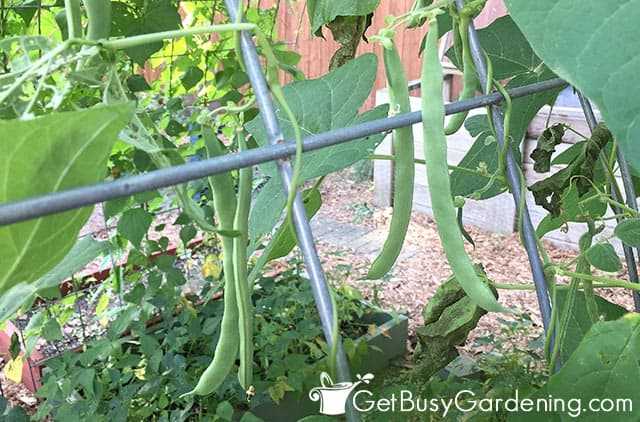

Interplanting string beans with companion plants like marigolds, nasturtiums, or basil can help repel pests and attract beneficial insects that prey on common bean pests.
6. Pest Control
Regularly inspect your string bean plants for signs of pests such as aphids, mites, or beetles. Use organic pest control methods like handpicking, introducing beneficial insects, or using insecticidal soaps or neem oil if necessary.
7. Disease Management
Monitor your string bean plants for signs of common diseases like powdery mildew, bacterial blight, or bean rust. If you spot any signs, remove infected plants, and ensure proper air circulation by spacing your plants adequately.
8. Fertilization
Provide your string bean plants with adequate nutrition by using balanced organic fertilizers. Well-nourished plants are less prone to diseases and can better resist pest damage.
By following these preventive measures, you can minimize the chances of pests and diseases damaging your string bean crop, allowing you to enjoy a bountiful harvest of fresh and delicious beans.
Companion Planting for Increased String Bean Yields
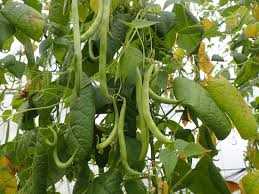

Companion planting is a gardening technique that involves planting certain plants together to enhance their growth and provide mutual benefits. When it comes to growing string beans, utilizing companion planting strategies can help increase yields and improve overall plant health. Here are some key companion plants to consider for your string bean garden:
1. Corn
Planting corn alongside string beans can have multiple benefits. The tall cornstalks provide shade for the low-growing string beans, which helps to keep the soil cool and moist. This is especially beneficial during hot summer months. In return, the string beans can climb up the cornstalks, saving space in the garden and allowing for increased air circulation, which helps prevent disease.
2. Marigolds
Marigolds are often used as companion plants in vegetable gardens due to their ability to repel pests such as aphids, nematodes, and Mexican bean beetles. Planting marigolds around your string bean plants can help protect them from these common pests, reducing the need for chemical insecticides. Additionally, marigolds add beauty to the garden and attract beneficial insects such as bees.
3. Carrots
Carrots make excellent companion plants for string beans because they have a shallow root system, while string beans have a deep root system. This means that they have different nutrient requirements and can grow in the same space without competing for resources. Furthermore, carrots help improve soil structure and prevent soil compaction, which benefits the growth of string beans.
4. Herbs
Planting herbs such as dill, basil, and cilantro near your string bean plants can help deter pests and attract beneficial insects. For example, dill attracts hoverflies, which feed on aphids that can damage string beans. Basil is known to repel pests such as thrips and whiteflies. Additionally, herbs add fragrance to the garden and can enhance the flavor of your string beans when used in cooking.
By implementing companion planting strategies in your string bean garden, you can create a diverse and harmonious ecosystem that promotes healthier plants and higher yields. Be sure to research the specific requirements and compatibility of companion plants before planting them together, and observe the results to find the best combinations for your garden.
Harvesting and Storing String Beans for Maximum Freshness


1. Timing is Key
In order to ensure maximum freshness, it is important to harvest your string beans at the right time. String beans are best picked when they are still tender and crisp. Look for beans that are firm and brightly colored.
2. Harvesting Techniques
When harvesting string beans, gently hold the stem of the bean and detach it from the plant. Avoid pulling on the bean itself, as this can damage the plant. Use a pair of garden shears or sharp scissors for a clean cut.
3. Storing Freshly Harvested String Beans
After harvesting, it is important to store your string beans properly to maintain their freshness. The best method is to immediately place them in a plastic bag or container and store them in the refrigerator. Be sure to remove any excess moisture from the beans before storing to prevent spoilage.
4. Blanching for Extended Storage
If you have a large harvest of string beans and want to extend their storage life, blanching is a great option. Blanching involves briefly boiling the beans and then immediately placing them in ice-cold water to stop the cooking process. This helps to preserve their color, flavor, and texture.
5. Freezing String Beans
If you have an abundance of string beans, freezing them is an excellent way to preserve their freshness for future use. Simply blanch the beans as mentioned above, then pat them dry and place them in freezer-safe bags or containers. Label them with the date and store them in the freezer for up to a year.
6. Canning String Beans
Canning string beans is another option for preserving them for long periods of time. Follow proper canning procedures and guidelines to ensure safety. Canned string beans can last for several years when stored in a cool, dark place.
7. Using Fresh String Beans
When you’re ready to use your freshly harvested string beans, be sure to wash them thoroughly before cooking. Trim off any ends or blemishes, and they’re ready to be steamed, sautéed, or added to your favorite recipes like stir-fries, salads, or soups.
8. Enjoy the Fruits of Your Labor
Harvesting and storing string beans properly will allow you to enjoy their freshness and flavor long after the growing season. Whether you freeze, can, or cook them immediately, you’ll be able to savor the taste of your homegrown string beans.
“Question-Answer”
What are some expert gardening tips for growing string beans?
Some expert gardening tips for growing string beans include planting them in well-draining soil, providing support for the plants to climb on, watering them regularly, and ensuring they receive enough sunlight.
How long does it take for string beans to grow?
The time it takes for string beans to grow can vary depending on the variety, but on average, it takes about 60 to 70 days from planting to harvest.
Can string beans be grown in containers?
Yes, string beans can be grown in containers as long as the containers are at least 12 inches deep and have good drainage. Choosing bush variety of string beans is recommended for container gardening.
What are some common pests and diseases that affect string beans?
Some common pests that affect string beans include aphids, bean beetles, and spider mites. Diseases such as powdery mildew and bacterial blight can also affect the plants. Regular monitoring and proper pest management techniques can help prevent and control these issues.
Should string beans be harvested when they are young or ripe?
String beans should be harvested when they are young and tender, before the seeds inside fully develop. This is usually when the pods are about 4 to 6 inches long. Harvesting them at this stage will ensure the best flavor and texture.







